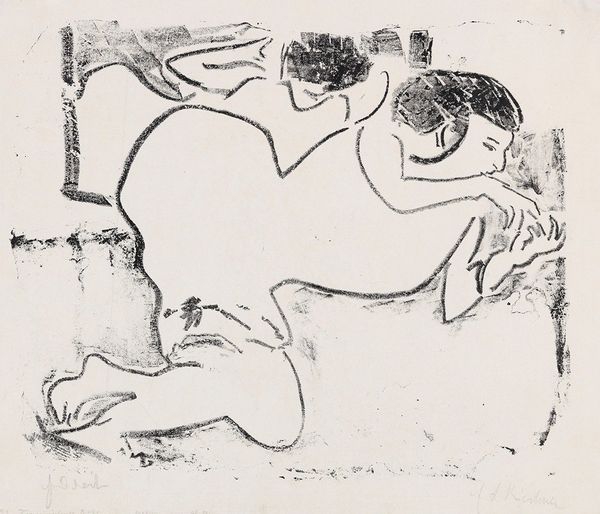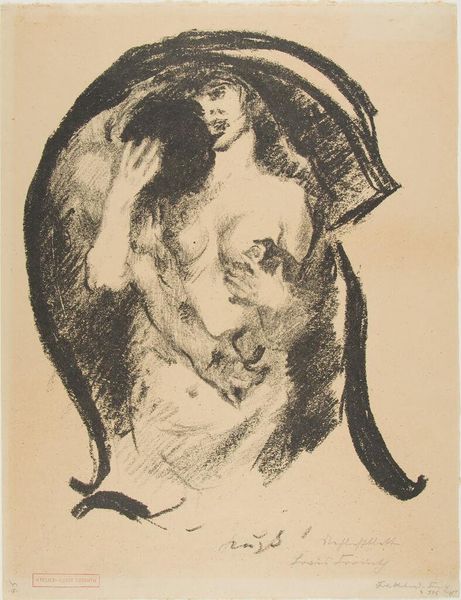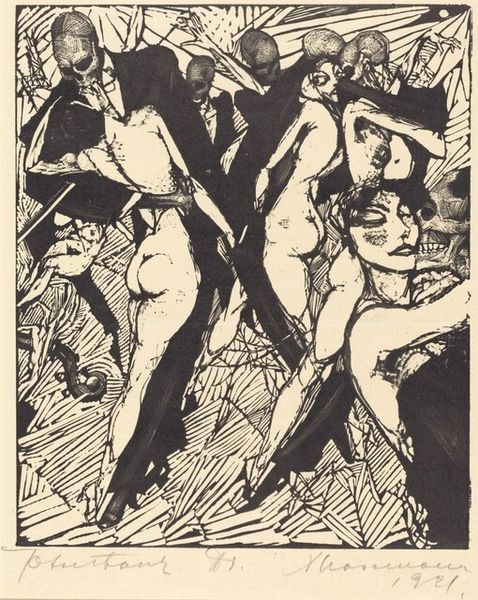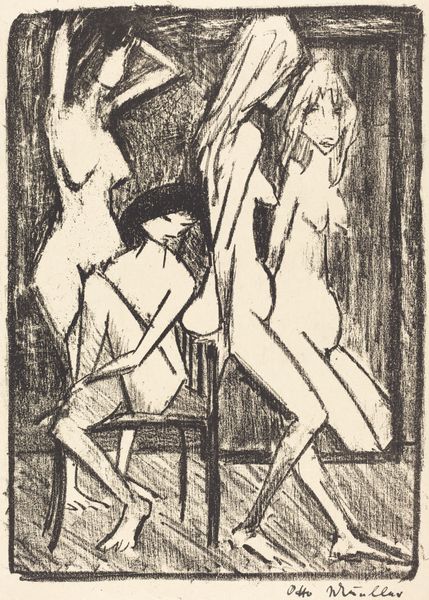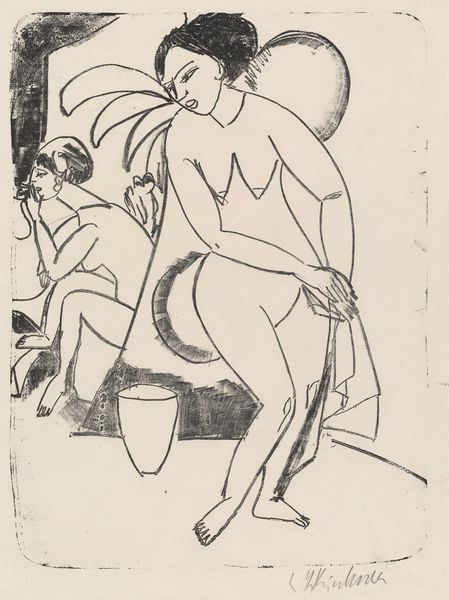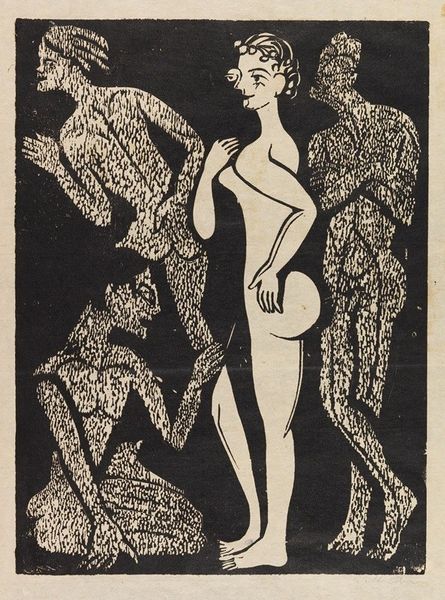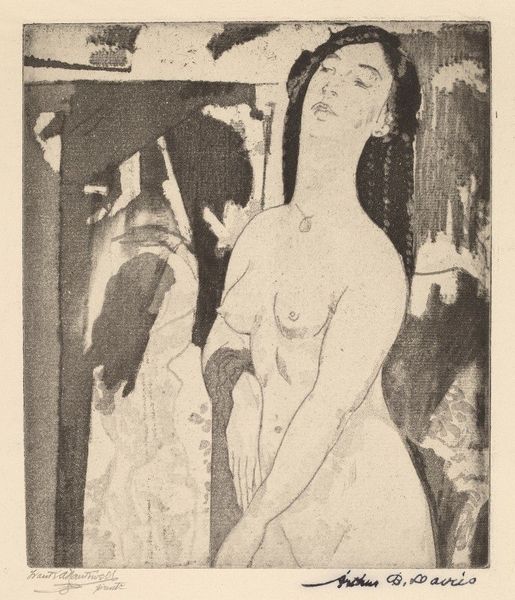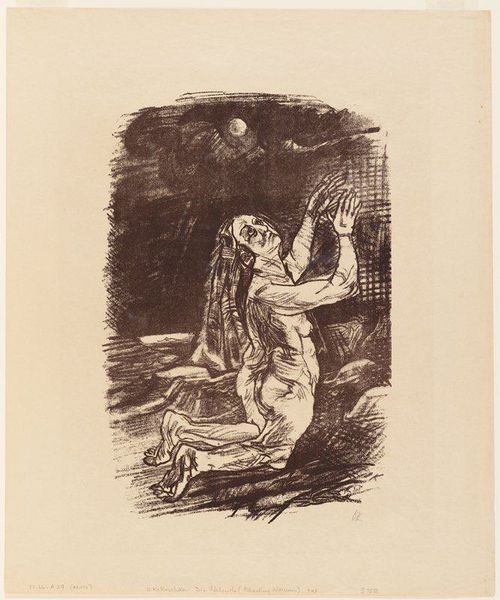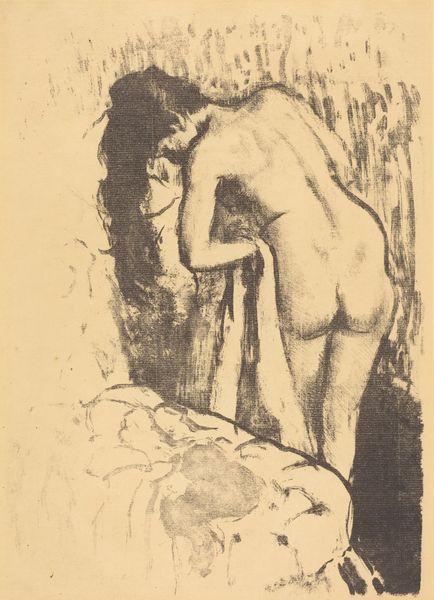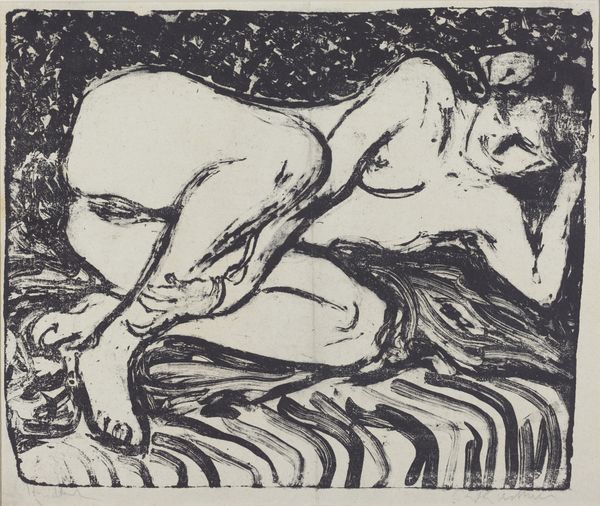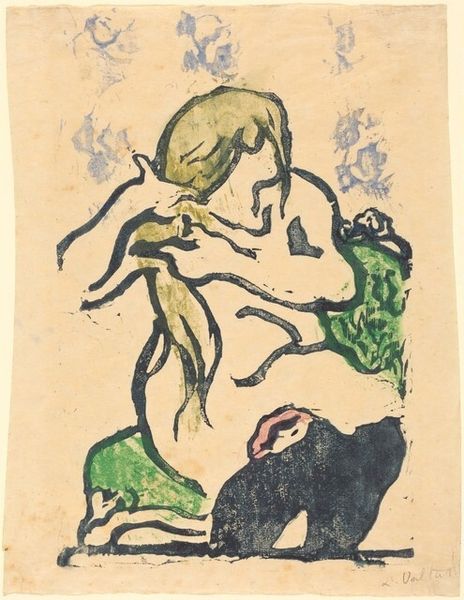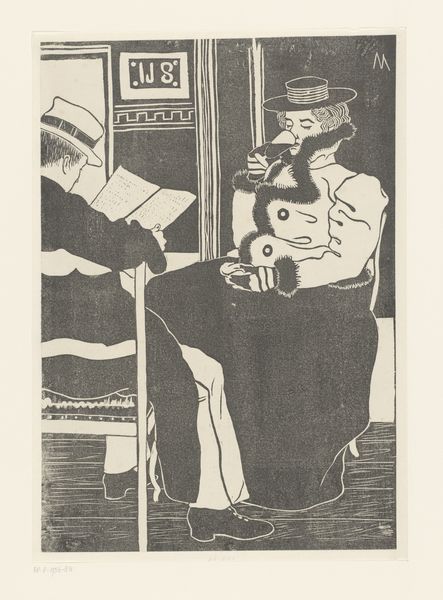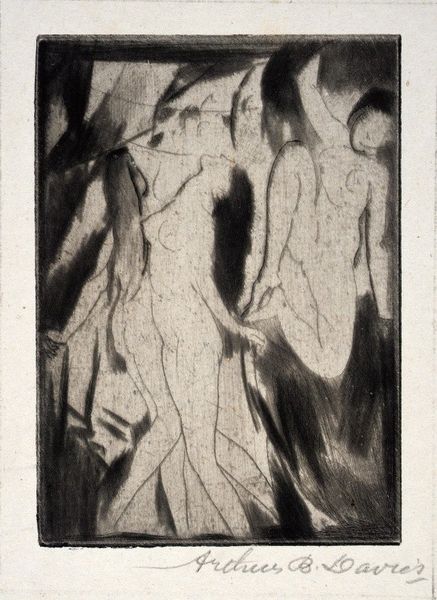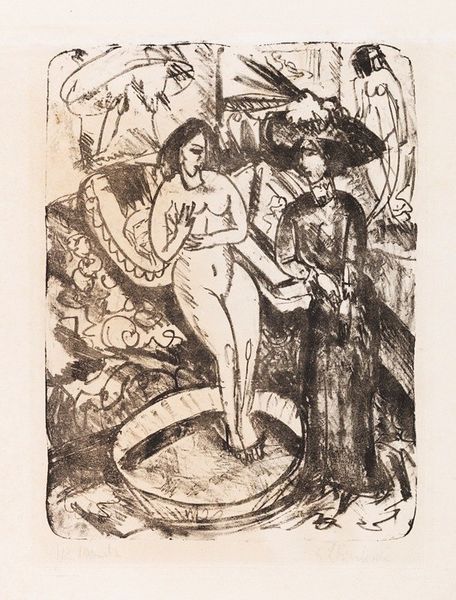
print, engraving
#
ink drawing
#
narrative-art
# print
#
figuration
#
black-arts-movement
#
abstraction
#
line
#
engraving
#
erotic-art
Copyright: National Gallery of Art: CC0 1.0
Bernard Reder made this print, Gargantua: Chapter XVII, sometime in the mid-20th century. The image relates to Rabelais' 16th-century satirical novels, which critique abuses of power. Reder was born in Austrian Poland but spent most of his career in Paris and New York. Like many artists of his generation, Reder absorbed influences from across Europe, in his case both German Expressionism and the School of Paris. The angular figures in this print, carved from the block with crude directness, show the impact of Expressionist woodcuts. The subject, however, evokes the bawdy, carnivalesque spirit of French Renaissance literature. The massive bodies tumble across each other in a chariot, mocking classical ideals of beauty, while recalling traditions of satire and caricature. The grotesque figures, combined with the coarse printmaking technique, suggest a deliberately anti-aesthetic stance. If we want to know more, we might start by reading Rabelais’s novel, researching the history of book illustration, or exploring the relationship between avant-garde art and popular imagery.
Comments
No comments
Be the first to comment and join the conversation on the ultimate creative platform.
